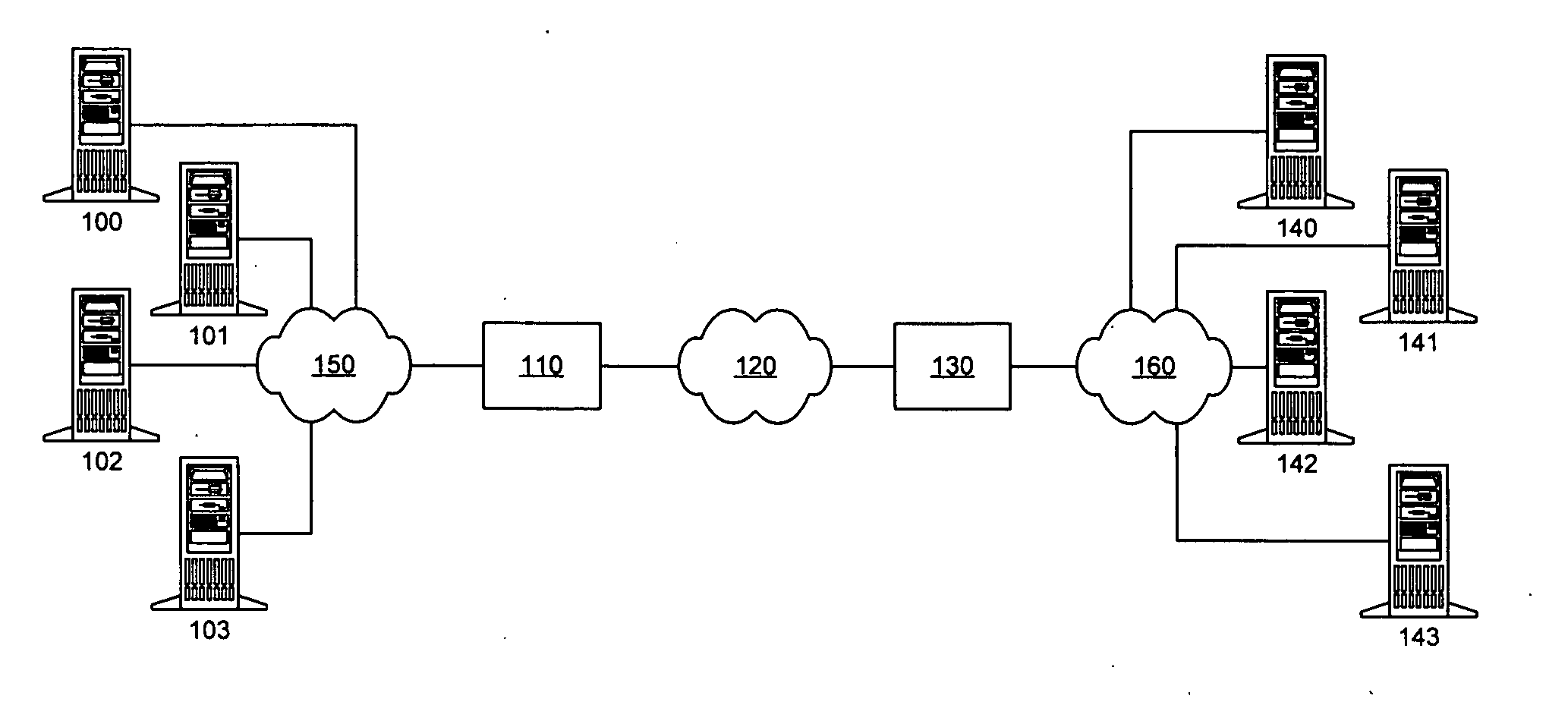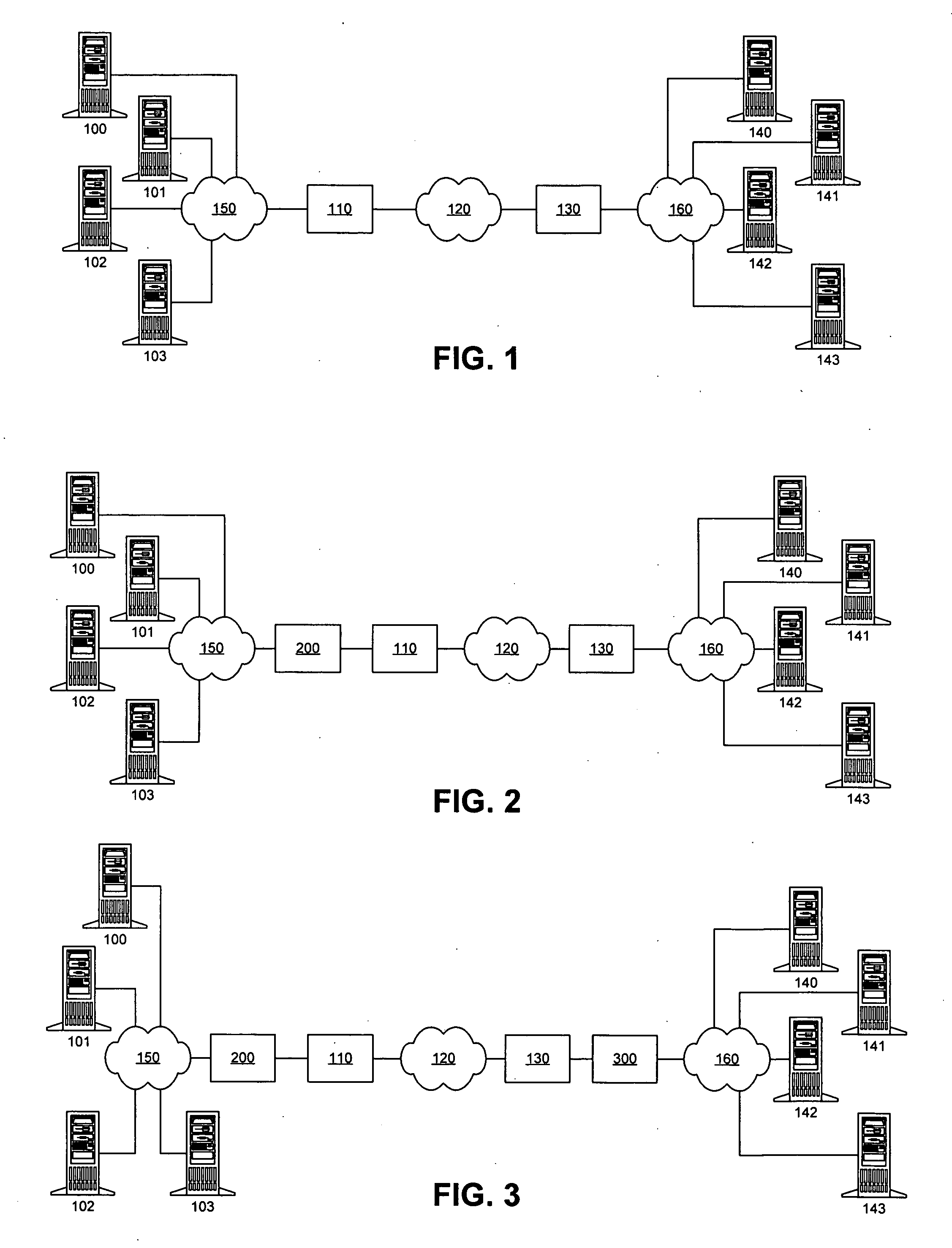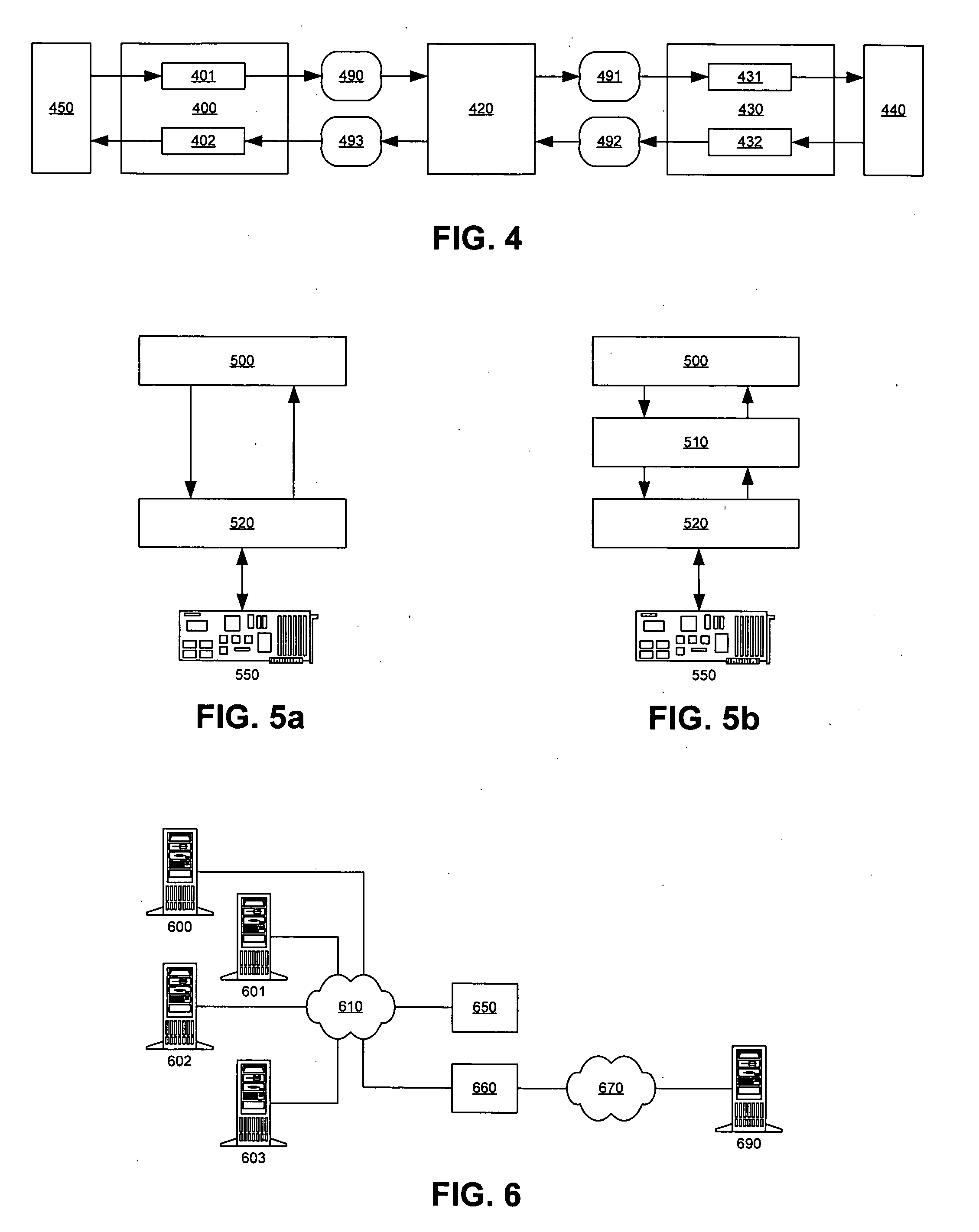Automatic detection and window virtualization for flow control
a flow control and automatic detection technology, applied in the field of computer network processing, networking equipment, networking protocols, can solve the problems of limiting the maximum tcp performance according to the model, ip is a connectionless, best-effort, unreliable, etc., to increase the system functionality, increase the window size, and increase the data buffering capability
- Summary
- Abstract
- Description
- Claims
- Application Information
AI Technical Summary
Benefits of technology
Problems solved by technology
Method used
Image
Examples
Embodiment Construction
The present invention addresses the deficiencies of conventional PEPs. Several advances in the state of the art are provided, eliminating numerous barriers to deployment present in the prior art solutions. The present invention can be deployed into a network without requiring significant additional resources. The present invention is not fundamentally limited in its performance boost by RTT. Minimal additional latency is introduced by its presence in the network, allowing the PEP benefits to be extended to connections with small RTTs. Distributed implementations of the present invention support redundantly connected networks in order to provide superior reliability and scalable performance.
No changes in the network topology are required to obtain the benefits of the invention. No changes in application or utility programs or operational procedures are required. The invention interoperates seamlessly with the existing security, performance, QoS, SLA, traffic, and network managemen...
PUM
 Login to View More
Login to View More Abstract
Description
Claims
Application Information
 Login to View More
Login to View More - R&D
- Intellectual Property
- Life Sciences
- Materials
- Tech Scout
- Unparalleled Data Quality
- Higher Quality Content
- 60% Fewer Hallucinations
Browse by: Latest US Patents, China's latest patents, Technical Efficacy Thesaurus, Application Domain, Technology Topic, Popular Technical Reports.
© 2025 PatSnap. All rights reserved.Legal|Privacy policy|Modern Slavery Act Transparency Statement|Sitemap|About US| Contact US: help@patsnap.com



